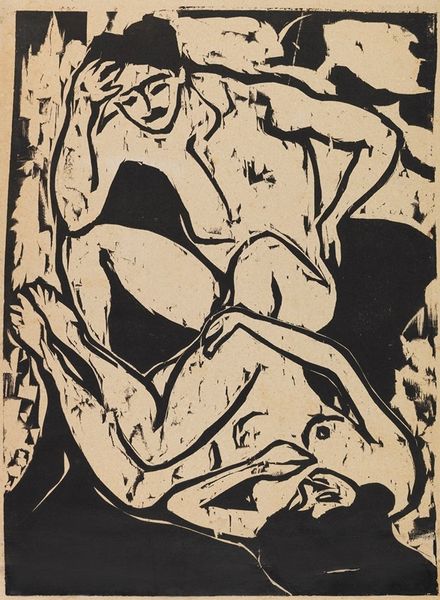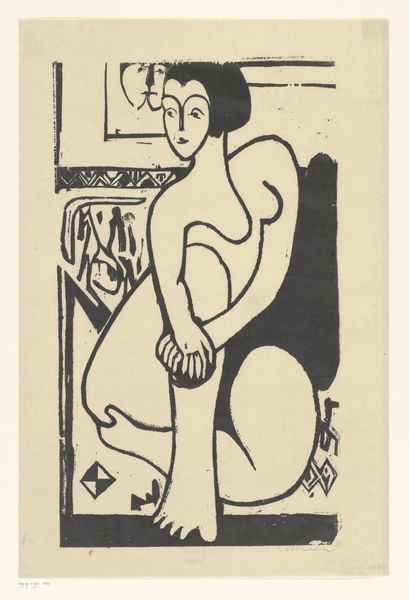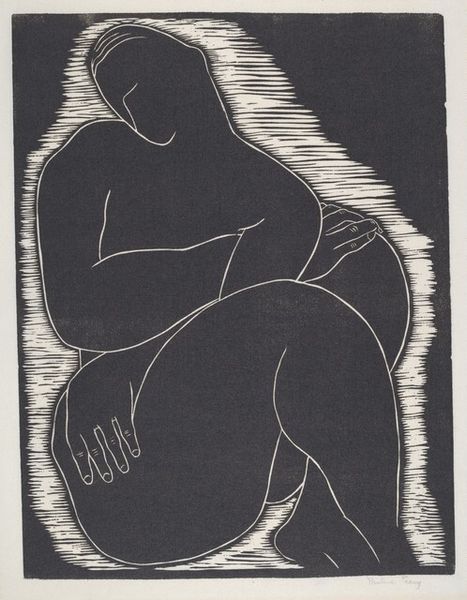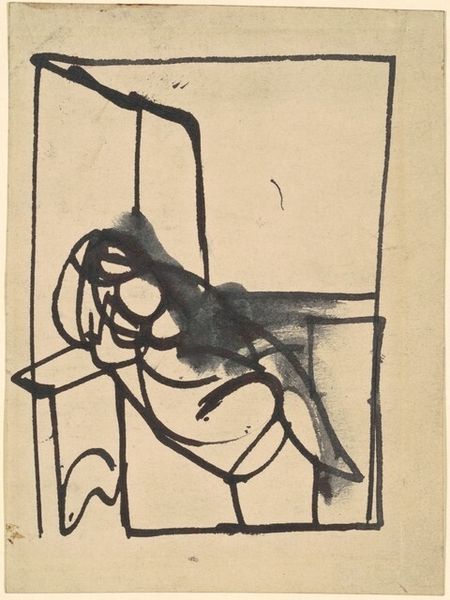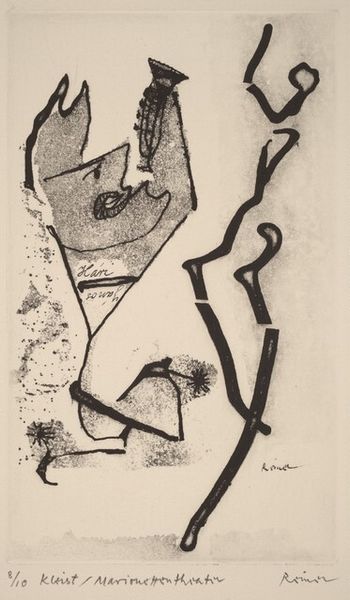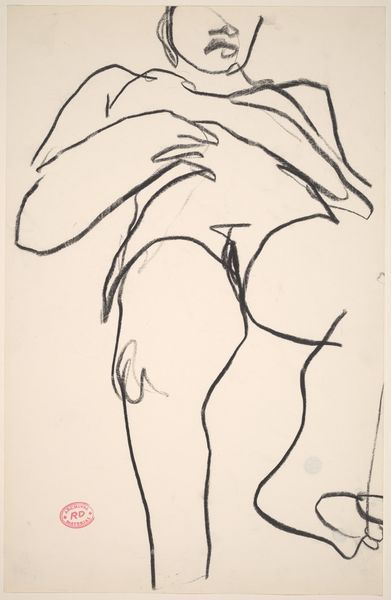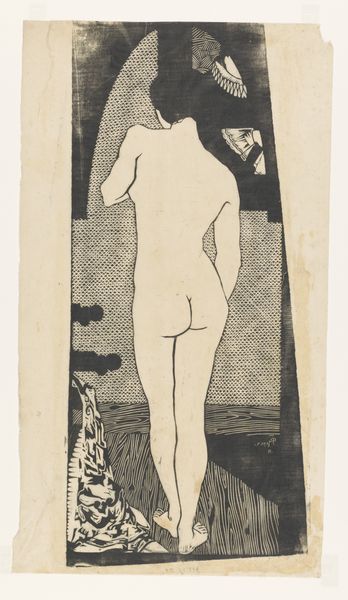
print, woodcut
#
ink drawing
# print
#
figuration
#
expressionism
#
woodcut
#
nude
Dimensions: sheet: 32.5 × 25.5 cm (12 13/16 × 10 1/16 in.) image: 12.5 × 9.5 cm (4 15/16 × 3 3/4 in.)
Copyright: National Gallery of Art: CC0 1.0
Editor: This is Paul Gangolf's "Seated Female," created in 1929 using woodcut and ink. It has such a stark, graphic quality because of the high contrast. The woman's expression also gives me pause... What do you make of it? Curator: The work exemplifies an expressionist style. The bold lines, simplified forms, and stark black-and-white contrast are notable. Consider how Gangolf employs the materiality of the woodcut. The gouges and ridges carved into the block determine the image. The physical act of carving itself becomes integral to the artwork’s meaning. Editor: So, it's less about realistic representation and more about the physical process and the strong contrasts it creates? How does that choice impact our understanding of the subject? Curator: Precisely. The distortion of the figure, those angular features and the lack of naturalism, communicate something beyond mere appearance. It's crucial to consider what the abstraction conveys through shape and form. Editor: It feels almost like she is trapped in her emotional landscape! What should viewers take away from this composition and treatment? Curator: Reflect upon the lines – both those that define her body and those that construct the claustrophobic setting. Then consider how texture contrasts against smooth surfaces. Ask yourself what Gangolf’s choices reveal. Is he inviting empathy, or offering a commentary on alienation through compositional choices? Editor: The interplay of textures makes sense! I now look at how much the formal choices add to an uneasy emotion within the figure. I appreciate your taking me through the textures and composition to bring the feelings to light! Curator: Likewise; it is through precisely such engagement that these artworks endure, by demanding that each viewer reflect upon its elements of form.
Comments
No comments
Be the first to comment and join the conversation on the ultimate creative platform.

